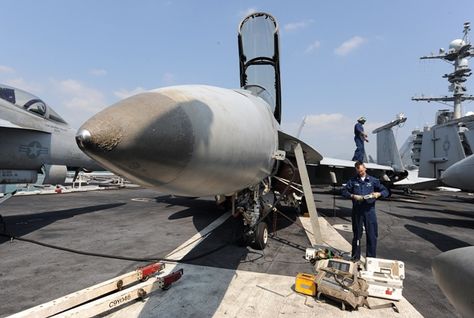This report is the result of our extensive market and company research covering the global military aviation MRO industry. It provides detailed analysis of both historic and forecast global industry values, factors influencing demand, the challenges faced by industry participants, analysis of the leading companies in the industry, and key news.
Introduction and Landscape
Why was the report written?
“The Global Military Aviation MRO Market 2012-2022” offers the reader detailed analysis of the global military aviation MRO market over the next ten years, alongside potential market opportunities to enter the industry, using detailed market size forecasts.
What is the current market landscape and what is changing?
The global economic slowdown has reduced the defense budgets of most leading spenders in the world, including the US, France, Germany, and the UK. These countries have cut back their spending on various defense sectors such as space, aircraft, and military vehicles. However, these budget cuts have propelled the military aviation MRO industry as countries now prefer to maintain, repair and upgrade their existing fleet instead of buying new equipment. High growth markets such as India and China have been formulating continuous programs to enhance their military aviation MRO sector, with the US too focusing on maintaining their existing fleet. This trend is also evident from the fact that even a small market like Africa is expected to show positive growth during the forecast period.
What are the key drivers behind recent market changes?
The last decade has witnessed wars in Iraq, Afghanistan, Serbia and Libya which were primarily carried out by aerial attacks. Countries have been relying primarily on air power because it enables them to respond quickly to distant threats while putting relatively few lives at risk. However, this constant use has resulted in rapid aging and wearing out of the military aircraft fleet of the US and coalition allies, who are now spending considerably on their maintenance, repair and upgrading. The US, which is the highest spender on military MRO globally, is currently facing a combined problem of the rising age of many of its combat aircraft and delays to the F-35A fighter aircraft fleet. In spite of budget cuts and with a view of mitigating these problems, the government has decided to increase its spending on military aircraft MRO. Moreover, global spending is also expected to increase as the worldwide military fleet will only get older and the cost of replacing them is far greater than the cost of their MRO.
What makes this report unique and essential to read?
“The Global Military Aviation MRO Market2012-2022” provides detailed analysis of the current industry size and growth expectations from 2012 to 2022, including highlights of key growth stimulators. It also benchmarks the industry against key global markets and provides detailed understanding of emerging opportunities in specific areas.
Key Features and Benefits
Detailed Market Analysis.
The report provides detailed analysis of the market for military aviation MRO during 2012-2022, including the factors that influence why countries are investing or cutting defense expenditure. It provides detailed expectations of growth rates and projected total expenditure.
The Main Providers in the Industry.
Lockheed Martin, Boeing, BAE Systems, DynCorp International, Pratt and Whitney, Honeywell International, EADS, SAAB, Thales, Northrop Grumman, General Dynamics, Raytheon, Elbit Systems, Rolls Royce, Embraer SA.
Market Entry Opportunities and Entry Strategies.
The military aviation MRO market is highly fragmented with many companies. With the total amount spent on military MRO being more than the amount spent on new aircraft production, many companies are vying for a share in this lucrative market and this has led to countries outsourcing most of their MRO contracts. Potential areas of cooperation with third-party MRO firms include issues with obsolescence in avionics for regular upgrades in software, training, calibration of test set-ups, aging studies and radio frequency identification (RFID). North America outsources approximately 50% of its military aviation MRO contracts and the Indian Air Force is also looking to outsource most of its MRO requirements to privately-owned companies in the country. This is primarily because it deals with issues such as a large mixed fleet, inadequate spares and support, high attrition of skilled manpower and obsolete equipment.
Key Market Issues
- Joint programs expected to increase over the forecast period.
A significant number of countries are investing in the development of their domestic military aviation MRO capabilities by establishing strategic alliances and technology transfer agreements with established global manufacturers. In addition to improving the indigenous capabilities of a domestic firm, this provides foreign companies with an opportunity to cater to a new market. This is especially true in today’s economic scenario when companies are looking to maximize efficiencies and cut costs. - High taxes hamper indigenous growth in some countries.
In some countries in Asia-Pacific and Latin America laws do not favor indigenous MRO third party providers including customs duty on the import of spares affecting the industry in India. Aircraft components are mostly imported by service providers and usually incur a customs charge at the rate of 25.40% with it going up to 100% for some equipment. The current rate of indirect taxes on other MRO activities is also quite high, making them uncompetitive as customs duty is exempt on parts imported for MRO of aircraft subject to specified conditions which, if not satisfied, would impose customs duty in the range of 19% to 27% on the imported parts. - Lack of skilled personnel.
Though the global military aviation MRO industry is rising, it is currently facing a significant challenge in terms of skilled manpower to carry out the work efficiently. This shortage is now restricting companies in the amount of work they can take on which is primarily due to the lack of in-house training programs which is further attributed to the MRO industry moving away from traditional apprenticeship programs in an effort to cut costs. A good example of the shortage of skilled personnel is the Canadian military helicopter MRO market which is witnessing a public bias against manual labor as a career choice and many youngsters are now opting for other vocations such as computer technology. - Long cycle times often lead to a reduction in military equipment inventories.
Over the extended life of a military system or platform, the sustainment, repair and overhaul phase represents approximately 60-80 percent of the entire system lifecycle. With continued focus on outsourcing military aviation MRO activities, private OEMs are being asked to assume responsibility for the total care of these systems and platforms, even as cost pressures are increasing and resources are limited. Due to these factors, the military aviation MRO industry still faces significant challenges in resource allocation, information management and service management while delivering required MRO services for a component or an entire platform.
Key Highlights
North America to continue to dominate the market.
Despite budget cuts, North America is expected to account for the largest share of the total global expenditure on military aviation MRO, with 48% share during the forecast period. High demand in the region is primarily driven by the region’s modernization programs and the overseas war against global terrorism.
Growth in performance based logistics (PBL) contracts.
Performance-based logistics contracts are rising in both civilian and military aviation MRO as they enable operators to offload investments in spares and other MRO capabilities. As a result, the company can focus on its core competencies thereby reducing costs and maximizing efficiencies. PBL contracts consist of an operator contracting with a supplier on a long-term basis to deliver a particular kind of service-related performance and sometimes take the form of a per-hour maintenance cost or a specific reliability guarantee. PBL contracts focus primarily on performance or output, rather than tasks or inputs by the service provider.
Civil MRO providers crossing over to the military domain.
The military maintenance market is worth more than its civil counterpart and this has resulted in commercial aviation MRO providers tapping into its potential to provide a distinct reliable revenue stream. In the current economic environment, companies in the aviation MRO domain are finding it hard to sustain strong revenues by focusing solely on civil MRO services and are looking to use their expertise for providing military MRO services. Government contracts and long term budget commitments make military MRO more resilient to global economic fluctuations compared to commercial maintenance.











